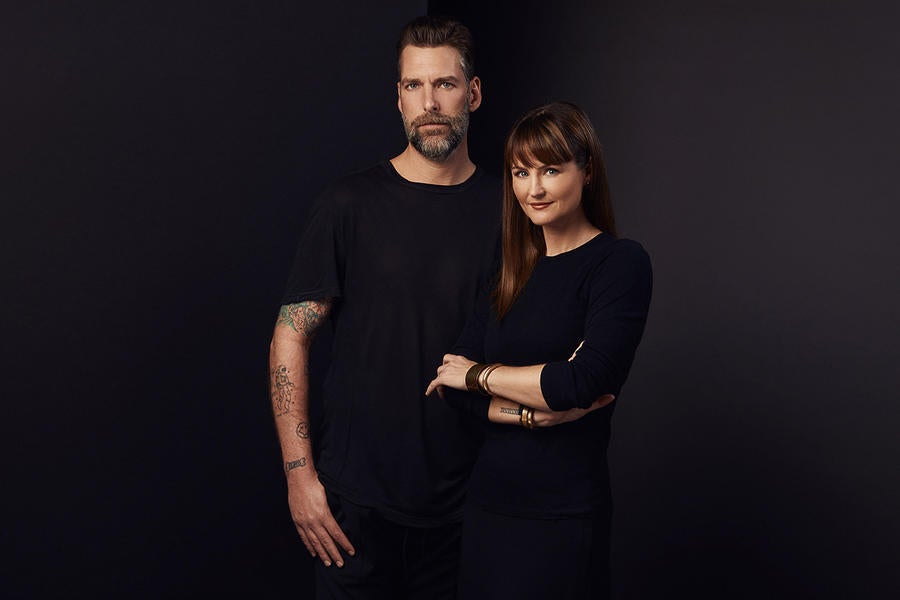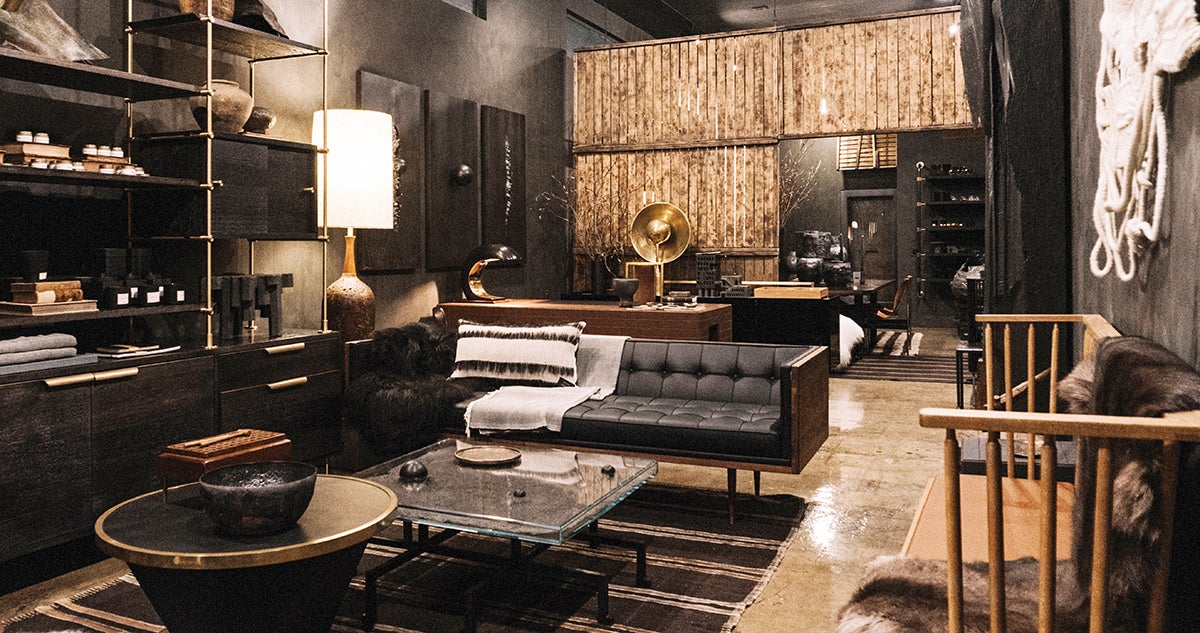Tucked into an 800-square-foot storefront in a gray courtyard building on North La Cienega Boulevard, Hammer and Spear’s cozy showroom sits in sharp contrast to the sun-drenched style of its neighbors. Inside, sleek brass shelving units from Amuneal, a Klein Agency couch, Mary Little’s textural paintings, and pottery from Caroline Blackburn punctuate the cavelike space, its walls washed in dense charcoal. Yet in the year and a half since Kristan Cunningham and Scott Jarrell opened the second branch of their Arts District shop, the wife-and-husband duo have seen astounding growth. Already, they are considering expanding into a larger space.
That doesn’t seem to surprise their landlord, Lee Stanton, who opened his antiques shop on the block in 2003. Soon after Hammer and Spear opened their first store in March 2013, Stanton discovered it cloistered in the lobby of a building on South Santa Fe Avenue, just down the street from the Southern California Institute of Architecture. (SCI-Arc, housed in the former freight train depot for the Santa Fe Railroad, is a physical and spiritual anchor for the downtown Arts District; many of Southern California’s most influential architects have some tie to it.)
“I immediately fell in love with what they had and their style,” recalls Stanton of his first visit to Hammer and Spear. He frequently braved the 40-minute, 10-mile drive east to the Arts District to pick up gifts for friends, well before blue-chip gallery Hauser & Wirth’s arrival put a polished sheen on the area. Thanks to an inventory that freely mixed vintage pieces with the work of the neighborhood’s growing band of craftspeople, each visit to Hammer and Spear offered up a new, arresting find. “I said, ‘We need something like you over on the west side, in the La Cienega Design Quarter,’” he recalls, referring to the consortium of to-the-trade shops that he founded 10 years ago and led until 2018. “Their response was: ‘You know, we’re a little overextended right now.’”


BOH subscribers and BOH Insiders.










































